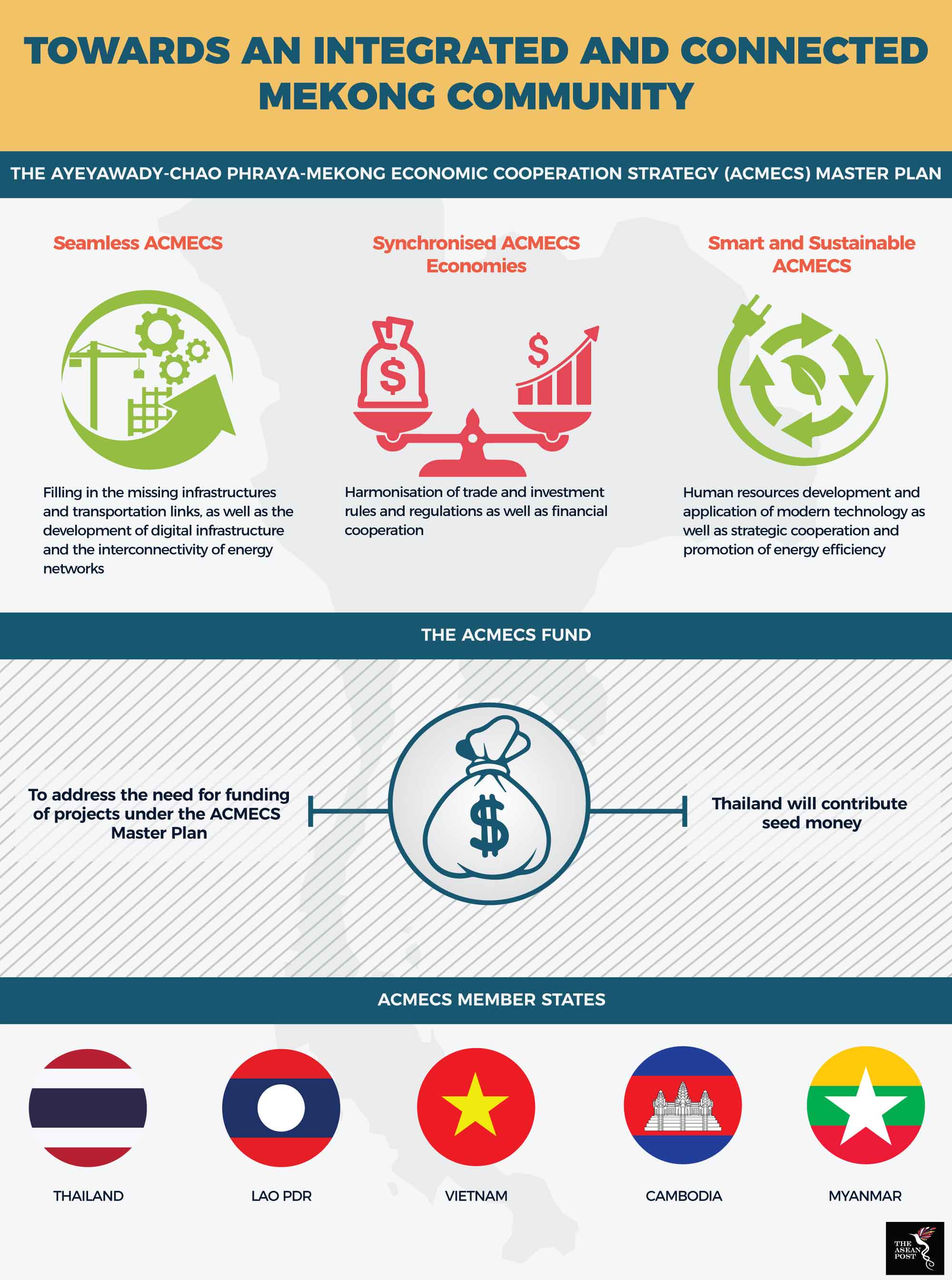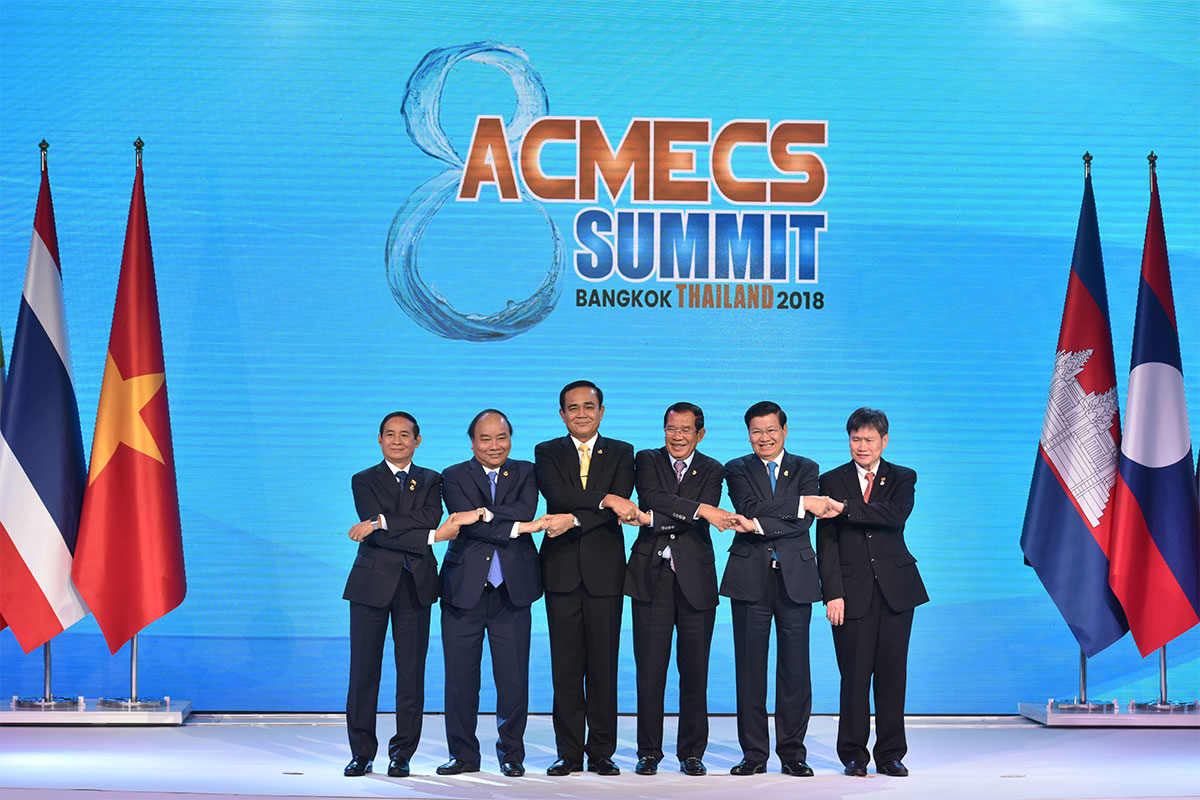Thailand’s proposal for a five-year master plan to improve mainland Southeast Asia consisting of Myanmar, Cambodia, Thailand, Lao PDR and Vietnam has been well received by leaders of participating nations.
The long-term outline, was announced by Thai Prime Minister, Prayut Chan-o-cha at the Ayeyawady-Chao Phraya-Mekong Economic Cooperation Strategy (ACMECS) Summit held in Bangkok last week. It represents his country’s efforts to boost the economic potential of the sub-region amid a changing world.
Established in 2003, ACMECS is an effort to foster economic development among its five members by taking advantage of cultural similarities in order to bridge the existing development gap among them. As a sub-regional organisation, its objectives are vastly aligned with those of the Association of Southeast Asian Nations (ASEAN) and is expected to add value to ASEAN’s ongoing efforts of economic and cultural integration.
The five economies of ACMECS have seen tremendous economic growth over the past few years and this trend is expected to continue into the future. According to projections by the Asian Development Bank (ADB), the economic growth rate of ACMECS economies averages at 6.3 percent – nearly one percent higher than the ASEAN average of 5.3 percent. CLM economies have the highest expected growth rates in 2018 when compared to other member states, averaging at 6.9 percent.
ACMECS Master Plan (2019-2023)
The Master Plan comprises three main goals which are set to provide direction for ACMECS over the next five years.
The first is to work towards a seamless ACMECS. The primary focus of this is to develop missing infrastructure and transportation links as well as to propel a shift to digital infrastructure and interconnectivity of energy networks.
The second goal is to ensure ACMECS economies are synchronised. This hinges on the harmonisation of trade and investment regulations as well as bolstering stronger financial cooperation between the five members.
The third goal is to develop a smart and sustainable ACMECS. Herein, the focus is mainly on human resource development and the use of technology in areas like the environment, agriculture, tourism and public health. Importance is also placed on the creation of smart cities and cybersecurity development – in line with Singapore’s ASEAN chairmanship goals this year – as well as the promotion of energy efficiency, renewable energy and other forms of environmental cooperation.
Leaders of the five countries also agreed to prioritise several projects to be implemented within the next two years. These projects will be focussed solely on infrastructure development and the harmonisation of rules and customs regulations to facilitate trade and investment between ACMECS nations along the East West Economic Corridor (EWEC) and Southern Economic Corridor (SEC).

Source: Various sources
“We have ambitiously set a goal that goods would be delivered through the East West Economic Corridor within approximately 30 hours, instead of over 5 days as per current practice,” Prayut said during a press conference.
He explained that these efforts will help build towards the Master Plan on ASEAN Connectivity 2025, narrow the development gap and support the ongoing ASEAN Community building process.
“ACMECS leaders are committed to building an ACMECS community within a community to reinforce ASEAN integration and to the achievement of the 2030 United Nation’s Sustainable Development Goals,” he said. “In the near future, we will witness ACMECS becoming a sub-region with freer flow of goods, services and investments, and acts as de-facto “land bridge” linking the economies and markets of the Indian Ocean and the Pacific Ocean, as well as other parts of Asia and the world.”
Financing the effort
Thailand is also taking the lead in ensuring there is adequate financing for projects that will soon be developed under this initiative. Currently, it is leading talks towards establishing an ACMECS fund where Bangkok is set to contribute seed money.
The other countries have agreed to task their respective senior financial officers to further look into possible ways and means to establish this fund preferably by the next Summit. They have also agreed that any contribution to the fund shall be on a voluntary basis.
Monumental shifts are also heralding a new global age that ACMECS must adjust to accordingly. China’s Belt and Road Initiative and the concept of a “free and open Indo-Pacific” represent the near-term challenges that these countries must contend with. Besides that, the ongoing technological revolution and the emergence of a global digital economy also represent opportunities for innovation which will only better the lives of citizens alike.
Under such circumstances, there is an urgent need for ACMECS members to work together to balance and maximise collaboration in a unified manner. In doing so, they would continue being at the core of ASEAN and serve as the pivotal engine of growth to drive the regional economy into the future.
